Kawai CA59 Review
The Kawai CA59 is the second model in the Kawai Concert artist series. This instrument is geared toward serious musicians. The PHI sound sampling technology is extremely high quality, which leads to an immersive and realistic playing experience. The CA59 can also double as a MIDI controller, which is a huge selling point. We are very impressed with this model. As they say…What’s not to like?!
$3,000.00
The Kawai CA59 is the second model in the Kawai Concert artist series. This instrument is geared toward serious musicians. The PHI sound sampling technology is extremely high quality, which leads to an immersive and realistic playing experience. The CA59 can also double as a MIDI controller, which is a huge selling point. We are very impressed with this model. As they say…What’s not to like?!
Overview

Kawai CA59 is the next step up from the CA49. The difference in price is around $8000US, but the quality of sound you get – due to much higher-spec speakers – is well worth it, as well as the additional instrument sounds (44 rather than 19) and more ability to customize the piano to your liking. It also has Bluetooth Audio so you can play music through the 100W speaker system from your device. You can’t do that on the CA49.
With each subsequent model, Kawai’s CA (Concert Artist) series caters more to really serious piano players. We will also be looking at the CA79 and the CA99, but let’s see what the Kawai CA59 has to offer.
The case is almost identical to the CA49 – there is literally one inch difference in height and depth between them, and a mere 17lbs in weight. It’s a very attractive upright piano-type cabinet. And, like the CA49, comes with an adjustable music stand and a pedal set built right into it. The lid is a sliding one.
The display panel is 128 X 64 pixel OLED. All settings and functions are made via this.
Keyboard
The keyboards of the Kawai CA49 and CA59 are identical.
The keys are “Grand Feel Compact”, meaning that they mimic the feel of a real grand piano, even though the key length is short – hence the word “compact”. The keys are wooden and balanced with counterweights. Also, the keys are all grade-weighted, meaning that you need less pressure to play the higher notes than the lower ones – just like on a real grand piano. There is also a “let-off” action which adds to the realism of each note.
The key tops are “Ivory Touch” finish which means they are more non-slip than the smooth shiny type – great for playing fast passages or jumping large intervals.
Although no digital piano (that I know of) feels completely like a real acoustic piano, this one does come very close, and more importantly, it’s a real pleasure to play.
Sound
Like the CA49, Kawai’s Progressive Harmonic Imaging™ (PHI) produces the very rich sound of this piano. The deep samples pick up the nuances and character of the piano. Each note has been sampled several times at different volumes so that you get a true variety of sound color, rather than the flat monotone sound that lower-end keyboards give you. This means that when you play a note softly, it will sound pretty identical to how it would sound if you were to play the same note softly on the acoustic it was sampled from.
There are 44 instruments on the Kawai CA59. The stars of the show are Kawai’s two most successful concert grands, the SK Concert Grand and the EX Concert Grand. The SK is far more mellow and has a particularly rich bass which suits classical music really well, while the EX has a much brighter, less nuanced tone, more suited to pop music.
In all, you have 12 acoustic pianos to select from, 5 electric pianos, 8 types of organ, harpsichord, vibraphone, clavi, and marimba. There is a celesta, 4 types of strings, pads, 4 different basses, and 2 guitars.
There is a Spacial Headphone Sound setting that reproduces the best surround sound for the player using headphones. This means that you get the fullest, richest sound even though you’re not using the speakers. Make sure you invest in good quality, comfortable headphones if you plan to use them a lot.
The Kawai CA49 also has a “Low Volume Balance” function. When you want to play with a low volume rather than using headphones, you can select your preferred balance between loud and soft notes so that you still have well-proportioned dynamics.
Features
Virtual Technician
The Virtual Technician feature allows you to customize your piano to suit your preference or a certain project you’re working on. These are based on adjustments a piano technician can make on a real acoustic piano – for instance, softening the hammers or adjusting the touch sensitivity of the keys giving you control over how loud and soft you can play.
Touch Curve
One of the settings you can adjust in Virtual Technician mode includes “Touch Curve” which is the touch sensitivity – meaning, how much resistance you get from the keys when you play. The settings are Light 1/2/3/4, Normal, which is the default and based on the sensitivity of the Kawai acoustic concert grand, Off (constant) – this is designed to work well when playing non-sensitive instruments such as organs, and Heavy 1/2/3/4.
A neat addition to the Touch Curve setting is that the player can program in his own personal touch. There are two settings reserved for this, meaning that you could set yourself two different touch sensitivities or, if there are two pianists in the family, they could each have their own personalized setting.
Voicing
Another Virtual Technician feature is “Voicing”. Piano technicians can produce pianos with different characters by changing the texture of all the hammers inside the piano. They often use needles, files, or brushes to achieve different sounds. While it would be very expensive to have your acoustic piano Voiced – the Kawai CA59 has a selection of different voicings built in as well as four settings left empty for personal voicings.
Resonance, Noise, and Effects
Noises and resonance are natural components of a piano’s character and these are also adjustable. This is something you can never do on an acoustic piano! Settings include damper resonance, damper noise, string resonance, undamped string resonance, cabinet resonance, key-off effect, fall-back noise and hammer noise, topboard simulation, decay time and release time. This is a lot of tweaking available to the most discerning pianist.
Temperament and tuning
The Kawai CA59 gives you an array of different tunings which include Equal, Pure Major, Pure Minor, Pythagorean, Meantone, Werckmeister, Kirnberger, User Temperament, Temperament Key, Stretch Tuning, and User Tuning.
Demo songs
There are 33 demo songs on the Kawai CA59. Each instrument has a demo song to demonstrate the sound at its best. A lot of these songs are originals written for Kawai, but there are some pieces by Chopin, Liszt, and Mendelssohn.
Reverb and effects
There are 6 types of reverb to select from which include Room, Lounge, Small Hall, Concert Hall, Live Hall, Cathedral and the depth and timing of the reverb are adjustable.
Other effects include various types of delay, chorus, tremolo, phaser, and rotary, all of which can be combined and tweaked.
Lesson function
Like the Kawai CA49, the CA59 comes with lessons built into the piano so you can access them immediately without having to connect a device and sign in to an app. The lessons are the Alfred’s Basic Piano Lesson Library Book Level 1A and Level 1B series which takes you right from the beginning, 25 pieces by Burgmuller, 30 etudes by Czerny, 106 lessons by Beyer and Bach lesson books.
If you worked your way through all these lessons, you could start from learning middle C and potentially go to a really high level, playing Bach. Whether you could do all this without any lessons with a teacher is debatable. However, if you have ever had lessons and got to an intermediate level, you could be successful just by using this system.
The tempo of the lesson songs is adjustable, so you can learn to play along at a slow speed and increase your tempo as you progress.
Note that the sheet music doesn’t come with the piano, so you have to buy the books separately through the publisher.
Metronome
The built in metronome can be set between 10 and 400bpm and 20 – 800bpm for eighth note rhythms. A metronome is essential when you’re learning the piano for practicing with a steady beat. The default setting is a quarter beat set at 120bpm. However, it’s possible to select and save a different value so that it becomes the startup default. The time signature can be set at 1/4, 2/4, 3/4, 4/4, 5/4, 3/8, 6/8, 7/8, 9/8, and 12/8. The volume of the metronome can be adjusted and your preferred setting saved to become the default.
As noted in the review of the Kawai CA49, the Kawai CA59 comes with 100 drum tracks as an alternative to the metronome click which makes practicing with a beat far more fun!
Transpose function
The Kawai CA59 is able to transpose the keyboard by +12 to -12 semitones. Any transpose setting you have made can be saved as default upon start-up, so if you are working on a particular song that you are always going to want to be transposed up or down a certain amount, you can save yourself some time by having this set as the default. (Remember to reset to 0 when you’ve finished practicing that particular song though, otherwise, everything you play will be in the wrong key!)
Having a good transpose function can be valuable to intermediate players particularly. If you’ve learned a song in a certain key and then start to accompany a singer who would prefer the song in a higher or lower key, you only need to dial in the change in your transpose setting and you can continue to play in the key you’ve practiced but the song will sound in a different key.
Fine-tune
This allows you to tune the piano by micro-amounts of 0.5Hz. The setting spans 427 – 453Hz. This is not a function that gets a lot of use, but most keyboards seem to have this function now. It can be useful if you’re playing with other players whose instruments aren’t quite in tune.
Record function
The record function allows for up to 10 songs, 2 tracks each, to be recorded internally with approximately 90,000 notes maximum memory capacity. The songs are automatically named “Song 1”, “Song 2” etc. You cannot name them yourself. If you do a lot of recording, it might be a good idea to have a notebook (paper or digital) and keep a note of which song you’ve recorded under which song number.
On the CA59, you can record and playback in three formats: MP3, WAV, or SMF (Standard MIDI File, which takes a tiny amount of hard drive space).
Duet
“Four hands” mode splits the keyboard into two sections (from note F4, which cannot be altered). This is useful for teaching purposes as the teacher can demonstrate on one half of the keyboard and the student can copy on their half of the keyboard. The right pedal works as a sustain for the higher half of the piano while the left pedal (the soft pedal) will operate as a sustain pedal for the lower half. The recording function is disabled during use of “Four hands” mode. Whatever instrument you have selected will sound across the piano – rather sadly, it’s not possible to have two different instruments in this mode.
Dual mode
The dual mode allows you to layer two instruments together. Selecting the two instruments you require is easy and you can change the balance between the instruments. For instance, you might want just a hint of strings rather than 50/50. If you find a sound you particularly like you can save it as the default.
Split mode
This feature allows you to select two different instruments and assign one of them to the treble keys and the other to the bass keys. You can change the volume of each of the instruments, raise or lower the bass notes by an octave, change the split point where one instrument ends and the other begins, and enable or disable the sustain pedal so that it does or doesn’t affect the lower half of the keyboard.
Headphone settings
This is an unusual feature to have on a digital piano, in my experience. You can select what type of headphones you’re using and the piano will adjust for the best listening experience for you. The choices are: Normal, Open, Semi-open, Closed, Inner Ear, and Canal.
Bluetooth
The Kawai CA59 has Bluetooth MIDI and Bluetooth Audio (unlike the CA49 which only has Bluetooth MIDI). This means that you can send and receive MIDI data between the CA59 and a computer or device. Plus, you can stream music from your device into the piano so it comes out of the piano’s speakers.
Pedals
The CA series of pianos all come equipped with a pedal set that is built right into the cabinet and connected. This gives you the three pedals standard on any modern piano. The one on the right is mostly in use – the Sustain pedal. This sustains any notes you play as long as you keep the pedal down. As soon as you release the pedal, the sound will stop. The middle pedal is the Sostenuto pedal. This will sustain any notes you play as you press the pedal. But, any notes you add after will not be sustained.
There isn’t a lot of call for this pedal unless you’re quite an advanced pianist. Romantic music by composers such as Debussy sometimes calls for it, and some contemporary music, but classical music doesn’t. The pedal on the left is the Soft pedal. The technical name for it is the “Una Corda” (one string). This dampens the sound so that it’s quiet and gentle. There is also not a huge call for this pedal, but it can be useful to have.
As stated earlier, when this piano is in duet mode, the left pedal operates as a sustain pedal for the lower half of the piano.
Connectivity
The Kawai CA59 has the same connectivity as the CA49 with the addition of a USB to DEVICE and MIDI Audio. In common, they have LINE IN ¼” L/MONO, R), LINE OUT (¼” L/MONO, R) 2 headphone sockets – (one 1/4” and one 1/8”), and USB to HOST.
Specifications

- 88 weighted wooden keys. Grand Feel Compact with Let-Off, Triple Sensor, and counterweights.
- Harmonic Imaging XL (HI-XL) 88-key piano sampling
- 44 instrument sounds
- 256 polyphony
- 10 X 2-track recording
- Connectivity: Line in (¼” L/MONO, R) LINE OUT, (¼” L/MONO, R), MIDI IN/OUT, USB to HOST, USB to DEVICE. 2 headphone jacks – ¼” + ⅛”
- Speaker output 100W (50W X 50W)
Who Is It Suitable For?
Beginner
For a beginner who starts off on a piano this good has all the benefits as if they were on an acoustic. Some really high-level pianists and teachers might disagree, but I think personally this is completely sufficient for a beginner, intermediate or advanced student of piano. When they came to play an acoustic, it wouldn’t be a big leap for them to adjust.
Experienced and serious pianists
More and more serious pianists are investing in good digital pianos as practice or teaching instruments. There are plenty of benefits of having this type of piano in your home. Not least is the fact that you never have to have it tuned, you can easily move it to another room in the house (with two people), and you can record directly onto it.
Being able to tweak the feel of the keyboard and the sound as you play is something you’ll never be able to experience on an acoustic. Plus of course, you can switch to playing the harpsichord when you play baroque music or use the organ sound to play Bach’s Toccata and Fugue in D minor.
Composers looking for a piano that will double as a MIDI controller might find this is a good model to go for. It’s very simple to connect to a computer and will feel lovely to play into your DAW (Digital Audio Workstation) no matter what VST instruments you’re using.
Pros and Cons

Pros
- This keyboard is one of the best with its weighted hammer action.
- The piano sounds are very realistic and beautiful.
- Play along with real orchestral recordings
- The small footprint means you can have a high-end piano without needing heaps of space.
- It’s easy to move with two people.
- Comes with a five-year guarantee
Cons
- None
Quick View
| Keys | Grand Feel Compact with Let-Off, Triple Sensor, and Counterweights 88 wooden keys with Ivory Touch key surfaces |
| Touch sensitivity | Touch-sensitive – 5 levels – Light 1, Light 2, Normal, Heavy 1, Heavy 2 |
| Sounds | 44 instrument sounds, including 12 acoustics, 5 electrics, 8 organs, harpsichord, vibraphone, clavi, marimba, celesta, 4 strings, vocals, pads, 4 basses, and 2 guitars. |
| Recording capabilities | 10 song, 2 track, recorder – approximately 90,000 note memory capacity |
| Metronome | Built-in metronome, settings from 10 -400BPM (20 – 800 for eight-note rhythms) |
| Polyphony | 256 notes can be played/sustained at once |
| Speakers | Built-in speakers are 50W X 2 – 2 low on the piano Woofers and 2 high on the piano (top speakers) |
| Headphones | 2 headphone jacks and hook to hold one pair of headphones |
| Accessories | Power cable, owners manual, 3 pedal set, and music rest are integrated into the piano. |
| Price point | $3,000 |
| Weight and Dimensions | 145lbs
56 X 18 X 36 inches |
Conclusion
As Kawai’s CA series advances upward, each subsequent model gets better and becomes the go-to for any serious pianist. Although some serious pianists scoff at digital pianos, it’s becoming more and more difficult for them to do so as the manufacturers creep ever nearer to creating a digital so good that you actually can’t tell the difference between it and an acoustic, or – dare I say it – you might even prefer the digital! What a thought!
If you’re a beginner considering this model, it’s a great idea to start off learning the piano on the best piano you can afford. If you decide this one is for you, it will last you a long time as you can go right through to a very high level on this piano. You have quite a good range of built-in lessons, you could also learn from an app, or take some private lessons.

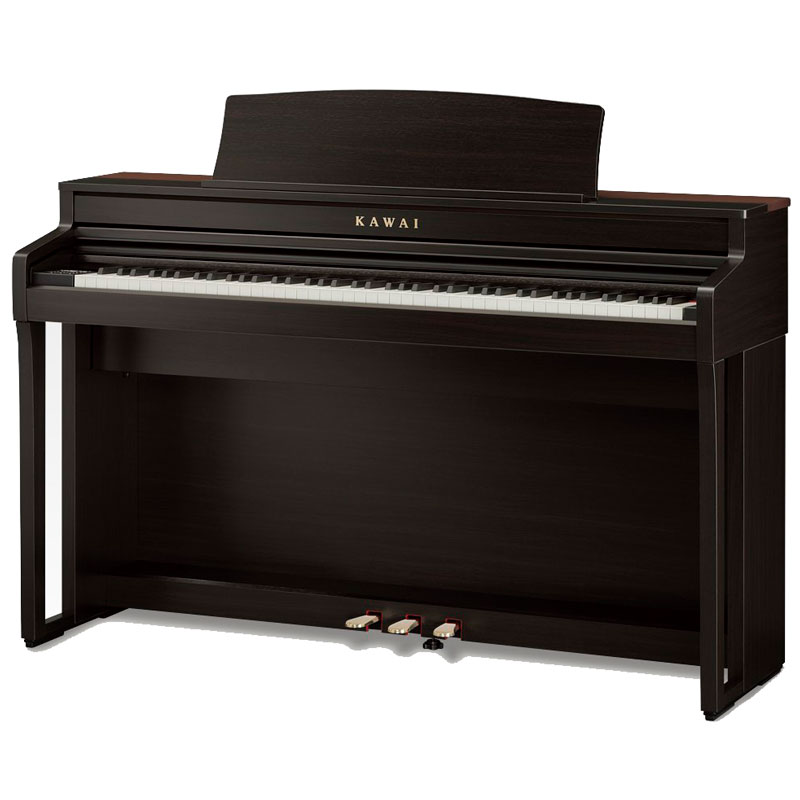
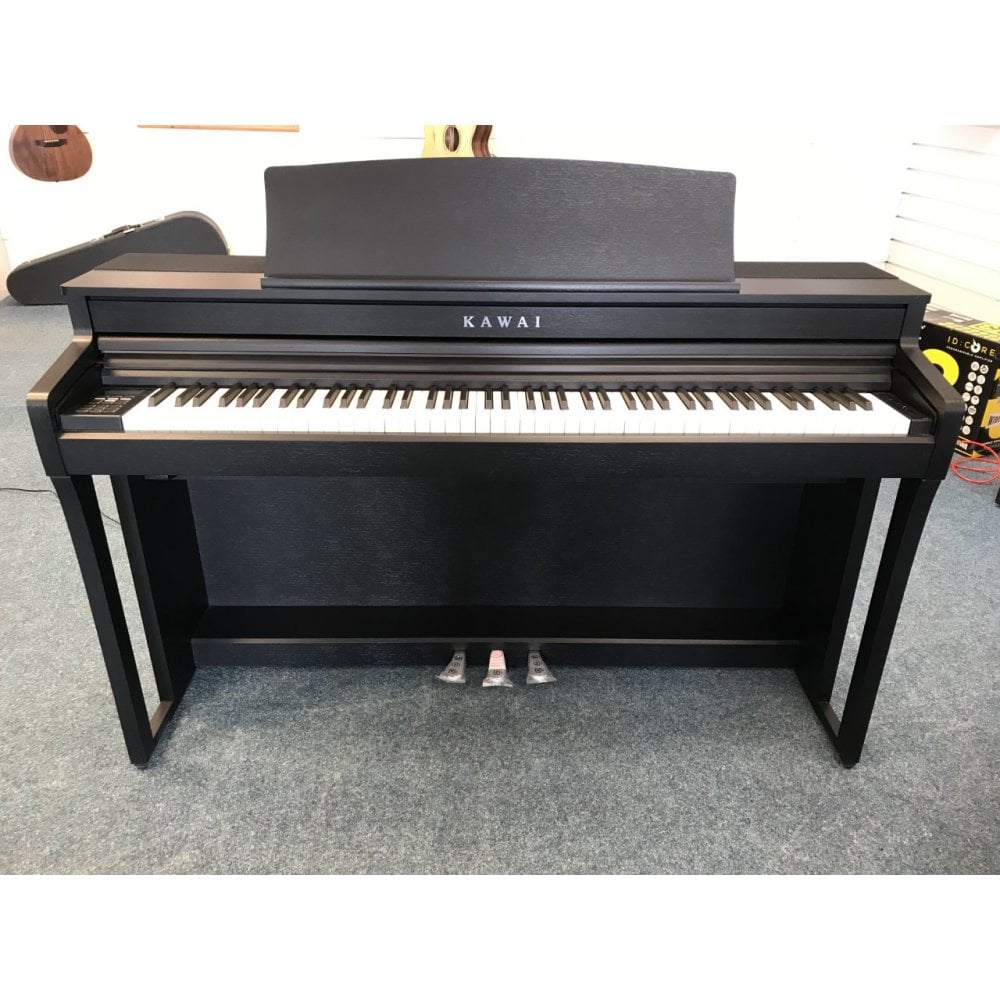


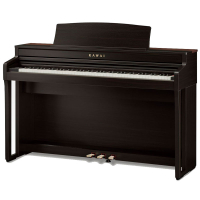 The Kawai CA59 is the second model in the Kawai Concert artist series. This instrument is geared toward serious musicians. The PHI sound sampling technology is extremely high quality, which leads to an immersive and realistic playing experience. The CA59 can also double as a MIDI controller, which is a huge selling point. We are very impressed with this model. As they say…What’s not to like?!
The Kawai CA59 is the second model in the Kawai Concert artist series. This instrument is geared toward serious musicians. The PHI sound sampling technology is extremely high quality, which leads to an immersive and realistic playing experience. The CA59 can also double as a MIDI controller, which is a huge selling point. We are very impressed with this model. As they say…What’s not to like?!




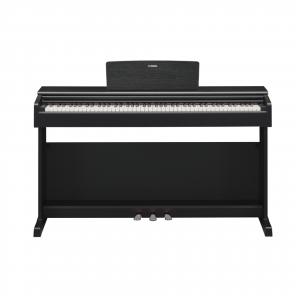

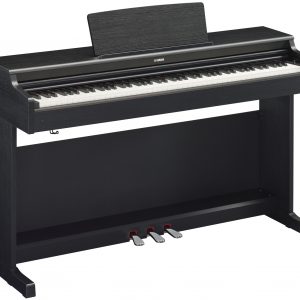
There are no reviews yet.